20 Types of Jaybirds in 2025 – Info, Pictures, Facts & More!
Last Updated on
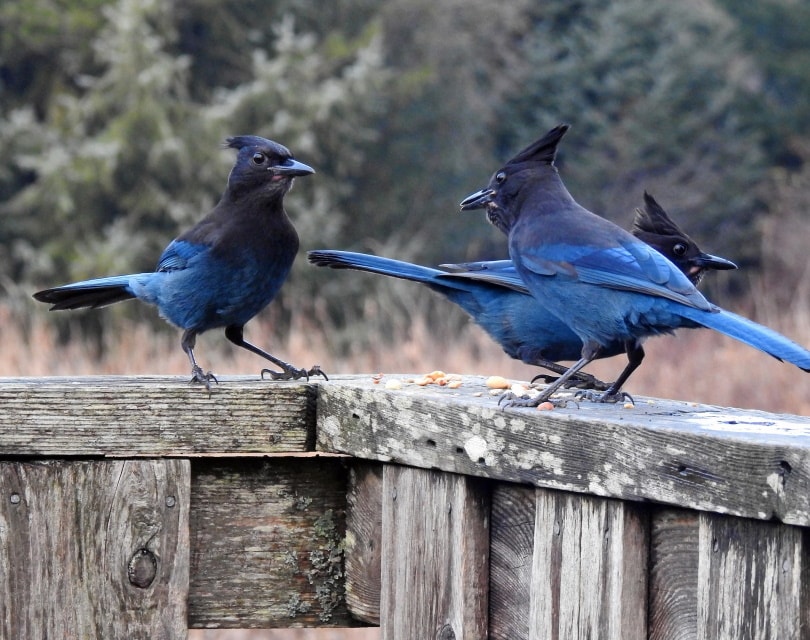
Jays are part of the order Passeriformes, sometimes called songbirds or perching birds. Both terms describe typical behaviors. They are also part of the Corvidae family, including several familiar species, such as nuthatches, ravens, and crows. The resemblance is easy to see. However, the evolutionary history of the jays is complicated since they are so widespread across the globe.
The intelligence of birds in this family is well known. Documented tool use among them is a sophisticated skill, making them some of the more intelligent species you’ll see. It’s part of what makes them so fun to watch and may also help explain their evolutionary success that goes back about 17 million years.
There are 10 living species of jays in North America, with others found in Europe, Asia, and Africa. They occupy a wide variety of habitats. Generally, they are vocal birds that are omnivorous. However, you’ll also see specialization in their diets and behavior that reflect their ecological niches. Other common characteristics include highly developed social skills, communication, and adaptability.

The 20 Types of Jay Birds
1. Blue Jay (Cyanocitta cristata)

The Blue Jay has a widespread presence in the eastern and central United States. This species is vocal, like other of this group. It also imitates a variety of calls of other birds, including Red-tailed and Broadwing Hawks. Its population is stable, according to the International Union for Conservation of Nature and Natural Resources (IUCN).
2. Southeastern Blue Jay (Cyanocitta cristata semplei)

The Southeastern Blue Jay is a subspecies of the more common species of its name. Its colors are more muted. It is the smallest of the four subspecies. It lives in the forested areas of Georgi, Florida, and the surrounding area. The population has declined in recent years due to pressure from urban development and habitat encroachment.
3. Island Scrub-jay (Aphelocoma insularis)
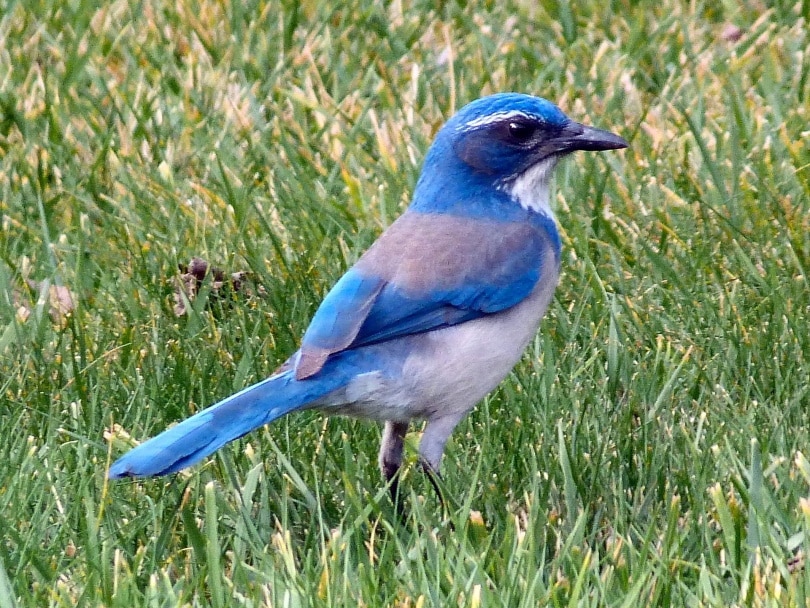
The Island Scrub-jay is a Californian bird species that occupies the central coast of the state. It is a medium-sized bird with an omnivorous diet that even includes rodents. It has a relatively small range compared to other jays we’ve considered. It is a vulnerable species because of its decreasing population.
4. Western Scrub-jay (Aphelocoma californica)
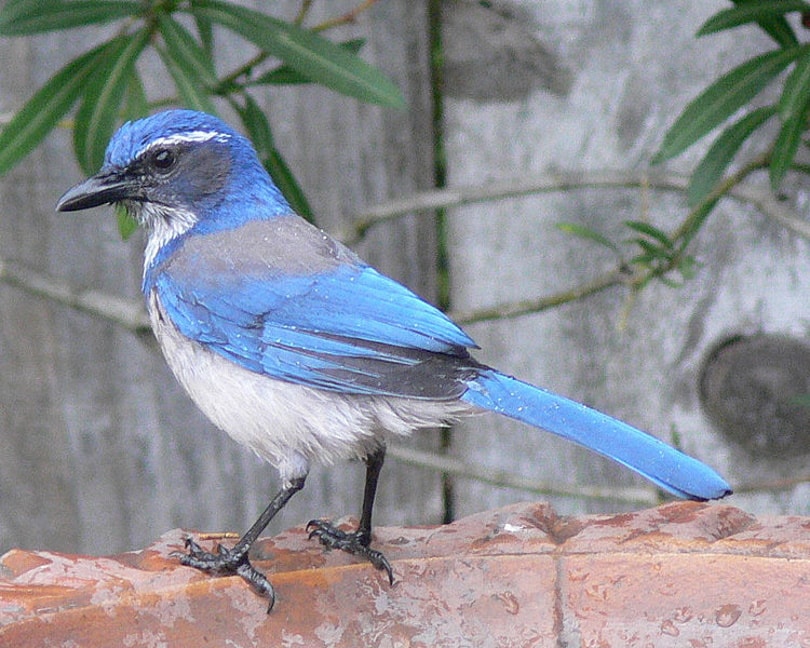
The Western Scrub-jay, also known as the California Scrub-jay, is smaller than many others on our list. It is another example of an adaptable bird that tolerates humans and their activities. While it prefers lowland forests, it will occupy urban areas and gardens. It is a highly intelligent species with an excellent memory. It is a species of least concern.
5. Florida Scrub-jay (Aphelocoma coerulescens)
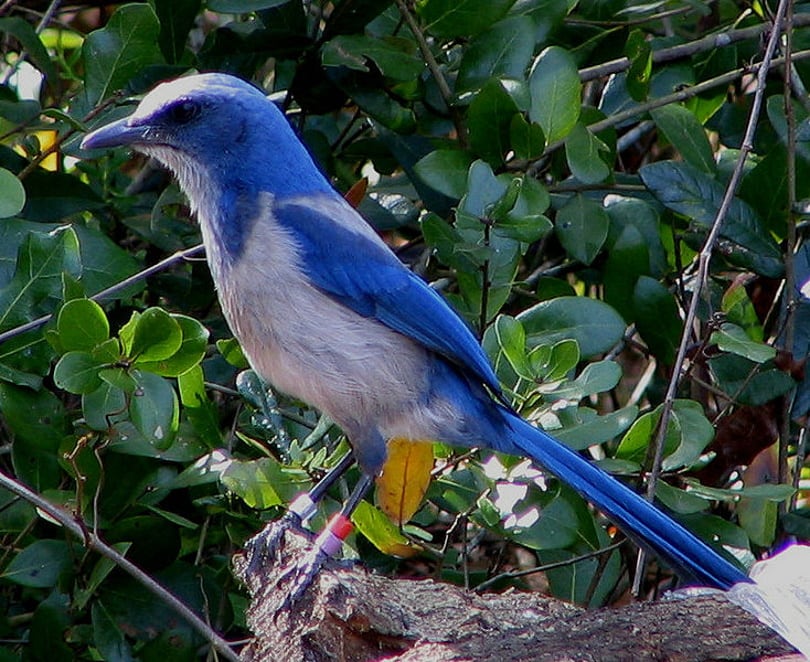
The Florida Scrub-jay lives primarily in the southern shrublands of the state. It is a tropical bird that prefers ground cover instead of dense trees, mainly after wildfires have cleared the land. Development and habitat encroachment have decreased its numbers in recent years, making it a vulnerable species.
6. Brown Jay (Cyanocorax morio)

The Brown Jay differs from many species in this group because of its color, curved beak, and long tail. Its primary habitat is the eastern coast of Mexico into Central America. Its varied diet includes reptiles and even nectar. It is a year-round resident of the savannas and forest of this area. It is a species of least concern, with a stable population.
7. Steller’s Jay (Cyanocitta stelleri)

The Steller’s Jay is unmistakable, with its black head and long crest. It lives in the western United States, north into Canada and Alaska, and south to Mexico. It occupies a variety of forest types and even gardens. This adaptable species has an increasing population, making it a species of least concern.
8. Woodhouse’s Scrub-Jay (Aphelocoma woodhouseii)
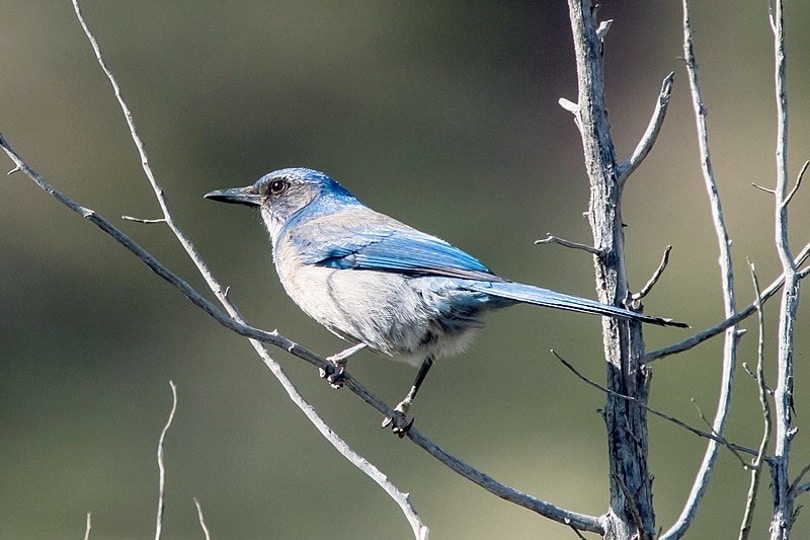
The Woodhouse’s Scrub-jay is another western species that lives in a variety of forest types. It is a slender, medium-sized bird that is both adaptable and intelligent. Its memory is excellent, allowing it to find cached acorns, whether they are theirs or another bird’s stash. It is a species of least concern, with a stable population.
9. Canada Jay (Perisoreus canadensis)

Also known as the Grey Jay, the Canada Jay is the northernmost species of this group. It lives throughout Canada into Alaska. It is a species of least concern, with an estimated population of 26 million birds. One of the primary threats to this forest-dwelling jay is climate change and the accompanying extreme weather events.
10. Yucatan Jay (Cyanocorax yucatanicus)
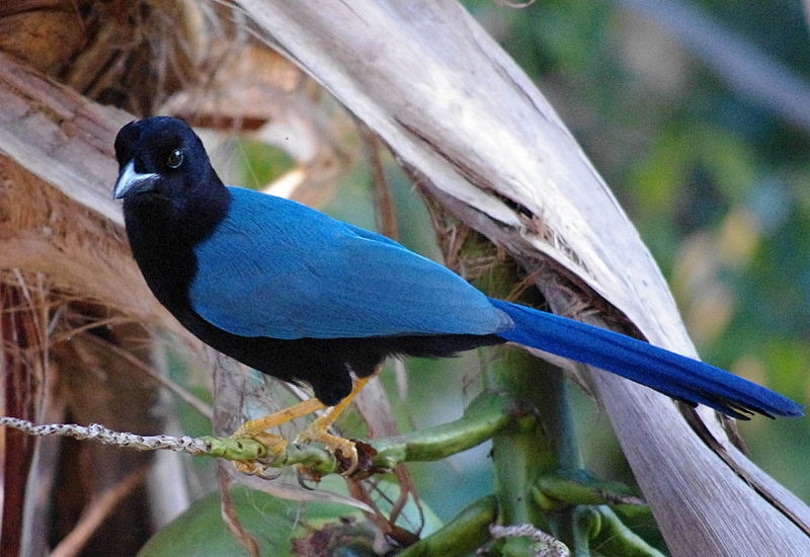
The Yucatan Jay differs from others in this group because of its black color and blue wings. It lives primarily in the peninsula of its name, extending into Guatemala and Belize. This bird has adapted well to the presence of humans and forest clearing, with increasing numbers that have placed it as a species of least concern.
11. Mexican Jay (Aphelocoma wollweberi)
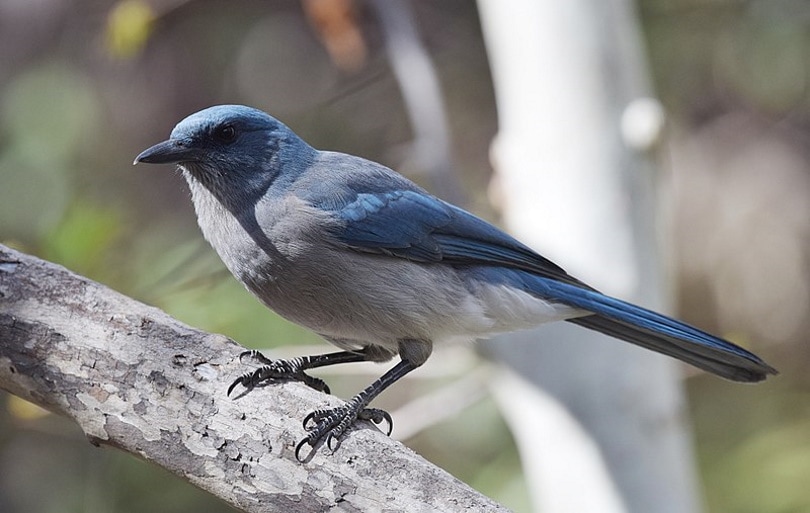
The Mexican Jay lives in the moist subtropical and tropical forests of Mexico, stretching north into the American Southwest. There are five subspecies of this bird. Its primary foods are pine nuts and acorns, which it will hoard as many jay species do. It is a species of least concern, although its numbers have dropped in recent years.
Related Read: 9 Birds That Look Like Blue Jays
12. Amami Jay (Garrulus lidthi)
https://www.instagram.com/p/CBj_wxfDAoI/
The Amami Jay is native to Japan and the nearby islands. It lives in both evergreen and broadleaved forests. Acorns are a vital component of its diet. However, the bird is also an opportunistic feeder that will occasionally forage in farm fields. It supplements its diet with small reptiles and insects when necessary. Its decreasing numbers make it a vulnerable species.
13. Green Jay (Cyanocorax yncas)
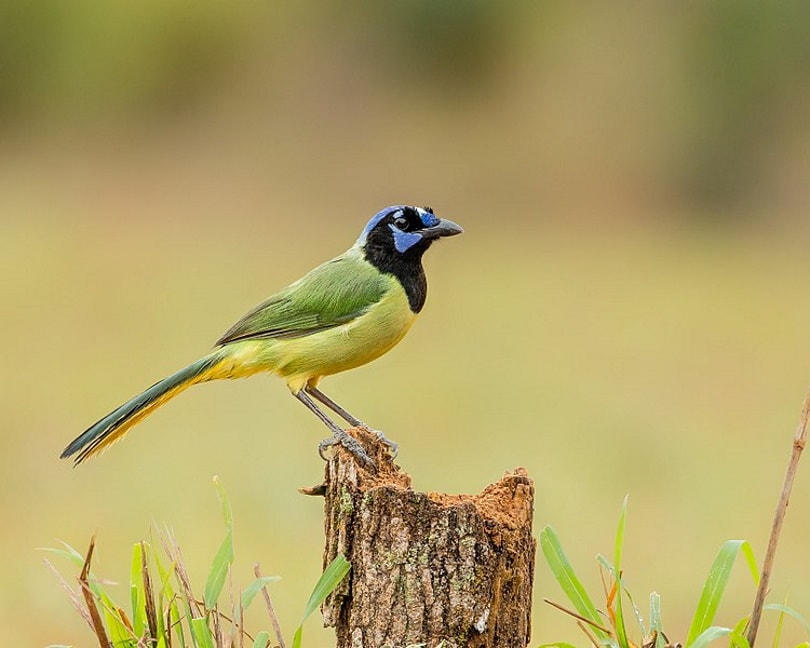
The Green Jay is a North American species living in Mexico with ranges extending to South America. It lives in the shrublands, savannas, and forests of these areas, extending into Bolivia, Venezuela, and Peru. It is one of the southernmost species in North America. Its population is stable with increasing numbers in recent years. It is a species of least concern.
14. Unicolored Jay (Aphelocoma unicolor)
https://www.instagram.com/p/B5eEmOsAZ6i/
The name of the Unicolored Jay is appropriate for this all blue-colored bird. It lives in Mexico, Guatemala, and El Salvador. Its habitat is the cloud or moist, subtropical forests of these areas where it is a year-round resident. While its numbers are decreasing, it’s still considered a species of least concern, according to the IUCN.
15. Siberian Jay (Perisoreus infaustus)
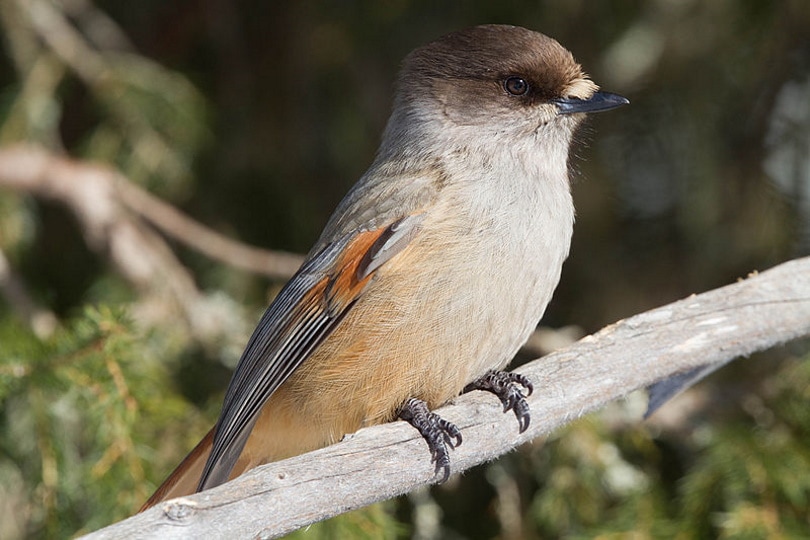
The Siberian Jay lives across Central Europe through the Russian Federation and into the northern reaches of Sweden and Norway. It prefers dense, boreal forests where it is a year-round resident. The bird is relatively long-lived, with a lifespan of up to 7 years. While its numbers have been decreasing, it is considered a species of least concern, according to the IUCN.
16. Sichuan Jay (Perisoreus internigrans)
https://www.instagram.com/p/BY6YTtHlQ17/
As the name would suggest, the Sichuan Jay is a resident of China, where it lives in the forested areas in a relatively small number of places throughout the country. It is a social bird that forms small flocks with other jays. It’s a relatively early-breeding species, forming pairs and mating in early spring. The population is declining, making it a vulnerable species, according to the IUCN.
17. Crested Jay (Platylophus galericulatus)

You’ll find the Crested Jay in the forested areas of Singapore, Thailand, and the nearby countries. It is a year-round resident in these places. Unfortunately, its numbers have declined in the last 30 years, putting it in the IUCN’s near-threatened category. Threats include fire suppression, logging, and exploitation from the cagebird pet trade.
18. Ultramarine Jay (Aphelocoma ultramarina)
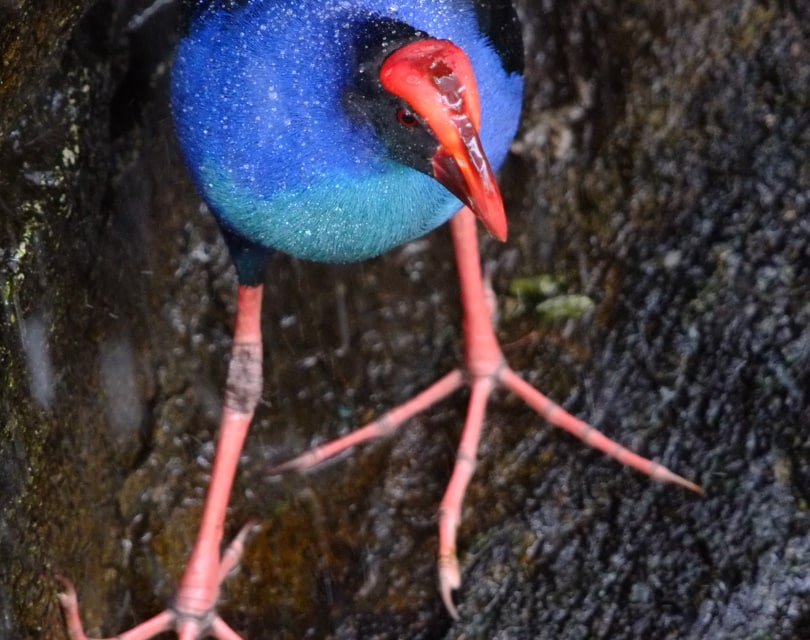
The Ultramarine Jay is also known as the Transvolcanic Jay because it inhabits the Transvolcanic Belt of central Mexico, extending into the American Southwest. It occupies the montane forests and mountain lowlands in these areas. While pinyon nuts and acorns are their main foods, these birds will also take a variety of insects. It is a species of least concern.
19.Turquoise Jay (Cyanolyca turcosa)
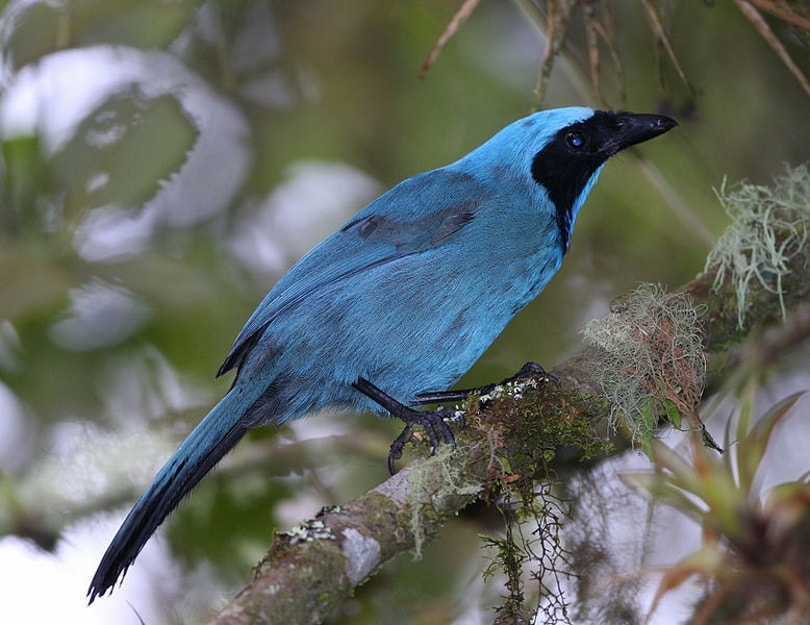
The Turquoise Jay is a South American species found in Peru, Ecuador, and Colombia. It lives in the subtropical and tropical forests of these countries. It is a striking bird, as the name would indicate. Little is known of the life history of this species, given its habitat. However, its population appears stable, making it a species of least concern.
20. Eurasian Jay (Garrulus glandarius)
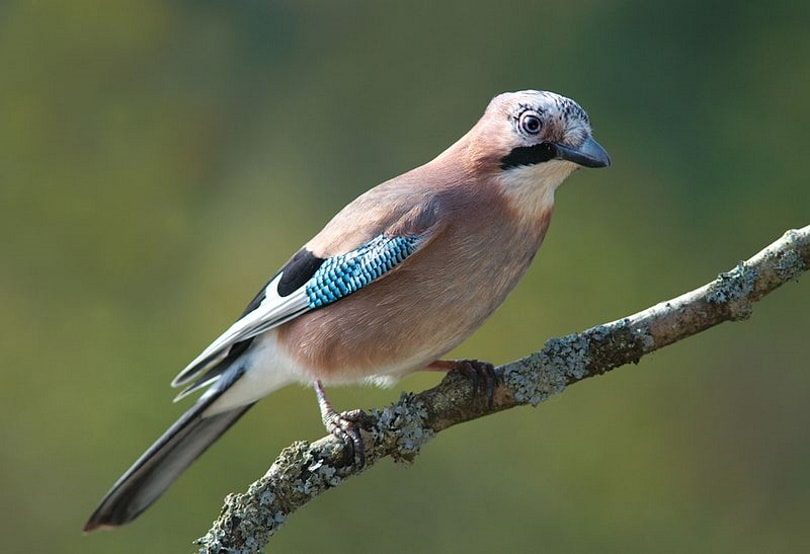
The Eurasian Jay lives across Europe and into Asia, all the way into China. There are 33 subspecies of this bird. It lives in a variety of habitats, particularly those with oak trees. Like many others in this group, this species prefers acorns. However, the jay will also eat fruits, invertebrates, and insects. Its extensive range and generalist diet reflect its adaptability, making it a species of least concern.
- You might also like: What is OSNA? (Ornithological Societies of North America)
Final Thoughts
As you’ve seen, the many types of jays are a diverse group of birds that are adaptable to a wide range of habitats, making them cosmopolitan species. Their intelligence and social behavior have allowed them to fill a variety of niches, including those occupied by humans. While most species have stable populations, development and habitat encroachment remain significant threats.
Check out some of our top trending posts:
- 5 Proven Ways To Attract Bluebirds To Your Yard & Feeders
- 3 Proven Steps to Get a Bird Out of Your House
- 6 Best Bird Watching Magazines
Featured Image Credit: JudaM, Pixabay
Table of Contents
- The 20 Types of Jay Birds
- 1. Blue Jay (Cyanocitta cristata)
- 2. Southeastern Blue Jay (Cyanocitta cristata semplei)
- 3. Island Scrub-jay (Aphelocoma insularis)
- 4. Western Scrub-jay (Aphelocoma californica)
- 5. Florida Scrub-jay (Aphelocoma coerulescens)
- 6. Brown Jay (Cyanocorax morio)
- 7. Steller’s Jay (Cyanocitta stelleri)
- 8. Woodhouse’s Scrub-Jay (Aphelocoma woodhouseii)
- 9. Canada Jay (Perisoreus canadensis)
- 10. Yucatan Jay (Cyanocorax yucatanicus)
- 11. Mexican Jay (Aphelocoma wollweberi)
- 12. Amami Jay (Garrulus lidthi)
- 13. Green Jay (Cyanocorax yncas)
- 14. Unicolored Jay (Aphelocoma unicolor)
- 15. Siberian Jay (Perisoreus infaustus)
- 16. Sichuan Jay (Perisoreus internigrans)
- 17. Crested Jay (Platylophus galericulatus)
- 18. Ultramarine Jay (Aphelocoma ultramarina)
- 19.Turquoise Jay (Cyanolyca turcosa)
- 20. Eurasian Jay (Garrulus glandarius)
- Final Thoughts
About the Author Robert Sparks
Robert’s obsession with all things optical started early in life, when his optician father would bring home prototypes for Robert to play with. Nowadays, Robert is dedicated to helping others find the right optics for their needs. His hobbies include astronomy, astrophysics, and model building. Originally from Newark, NJ, he resides in Santa Fe, New Mexico, where the nighttime skies are filled with glittering stars.
Related Articles:
How to Clean a Refractor Telescope: Step-by-Step Guide
How to Clean a Telescope Eyepiece: Step-by-Step Guide
How to Clean a Rifle Scope: 8 Expert Tips
Monocular vs Telescope: Differences Explained (With Pictures)
What Is a Monocular Used For? 8 Common Functions
How to Clean a Telescope Mirror: 8 Expert Tips
Brightfield vs Phase Contrast Microscopy: The Differences Explained
SkyCamHD Drone Review: Pros, Cons, FAQ, & Verdict

